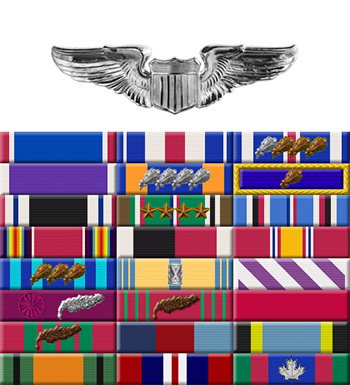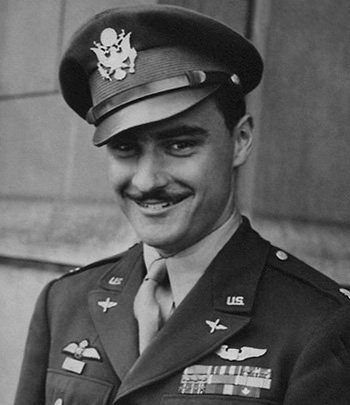
|
James A. Goodson |
 |
|||
| Rank, Service | ||||
Lieutenant Colonel O-5, U.S. Air Force |
||||
| Veteran of: | ||||
|
||||
| Tribute: | ||||
James Goodson was born on March 21, 1921, in New York City. He was aboard the S.S. Athenia when it was torpedoed by a German U-boat on September 3, 1939, and after being brought back to Ireland, he made his way to Toronto, Canada, and joined the Royal Canadian Air Force on March 5, 1941. Flight Sergeant Goodson earned his pilot wings with No. 6 Service Flying Training School at Dunnville, Canada, on December 5, 1941, and then deployed to England where he flew with the British Royal Air Force No. 43 Squadron, No. 416 Squadron, and then as Commander of No. 133 Squadron. He transferred to the U.S. Army Air Forces on September 25, 1942, and served with the 336th Fighter Squadron of the 4th Fighter Group. Goodson became the Commander of the 336th FS in March 1944, and he was shot down and became a Prisoner of War on June 20, 1944, being held at Stalag Luft 3 in Sagan, Poland, and later at Stalag 7A in Moosburg, Bavaria, until being repatriated in April 1945. Maj Goodson left active duty on December 15, 1945, and served in the Air Force Reserve until his retirement on March 1, 1959. During World War II, Goodson was credited with the destruction of 14 enemy aircraft in aerial combat plus 1 probable and 1 damaged, and another 15 enemy aircraft on the ground while strafing enemy airfields. James Goodson died on May 1, 2014, and was buried at the Massachusetts National Cemetery in Bourne, Massachusetts. |
||||
|
||||

